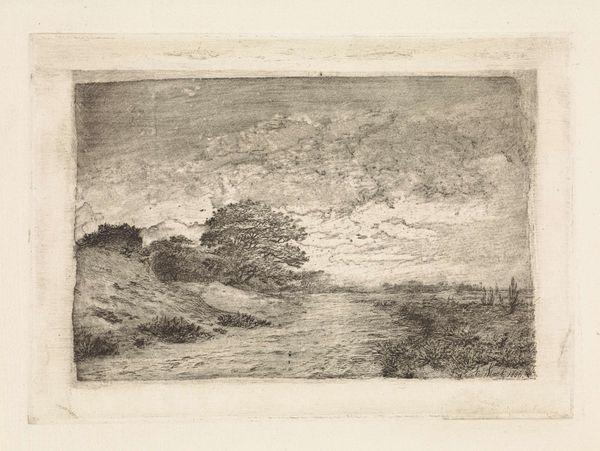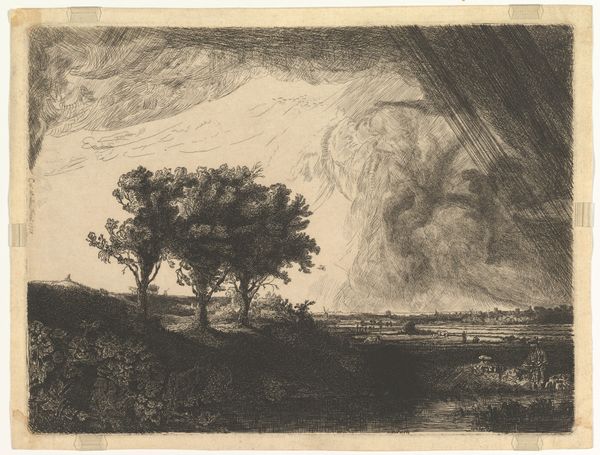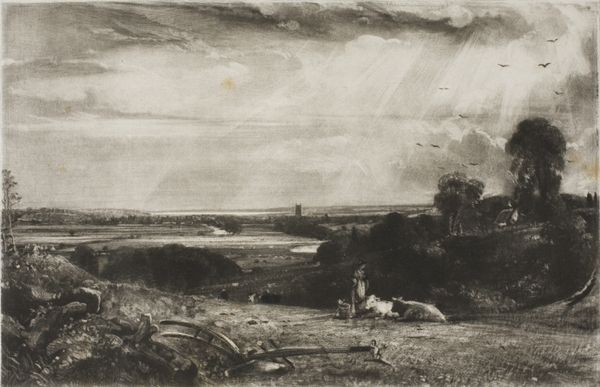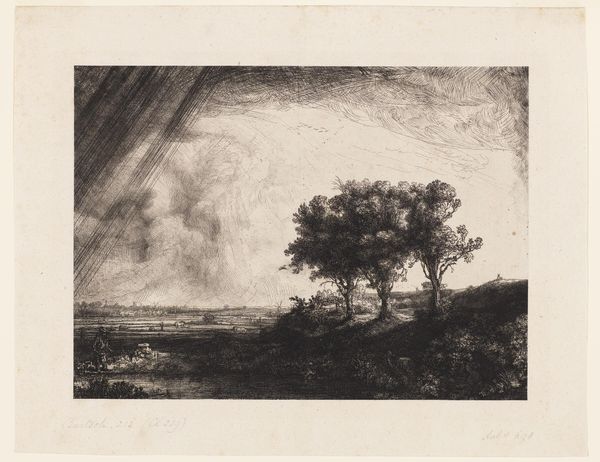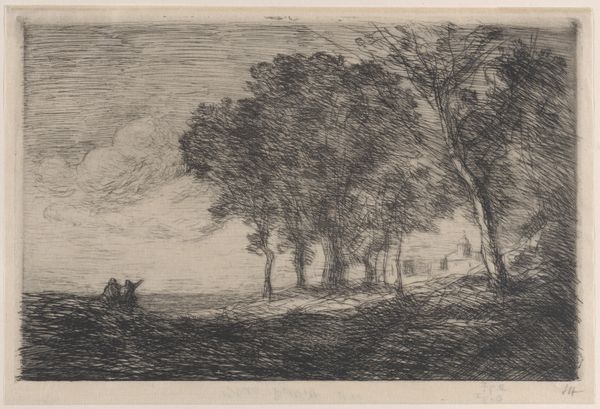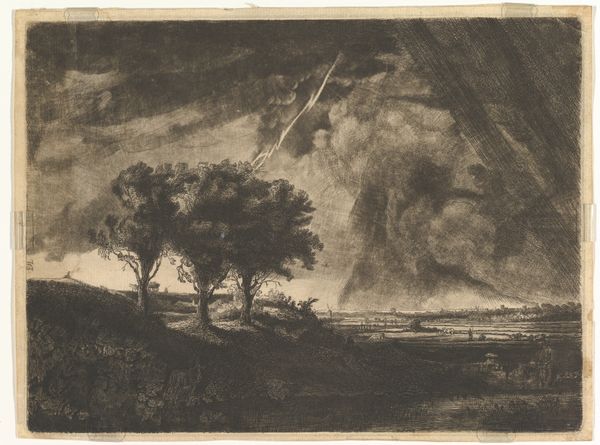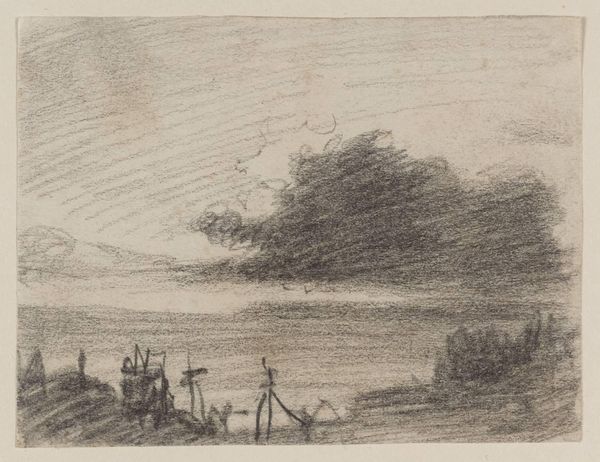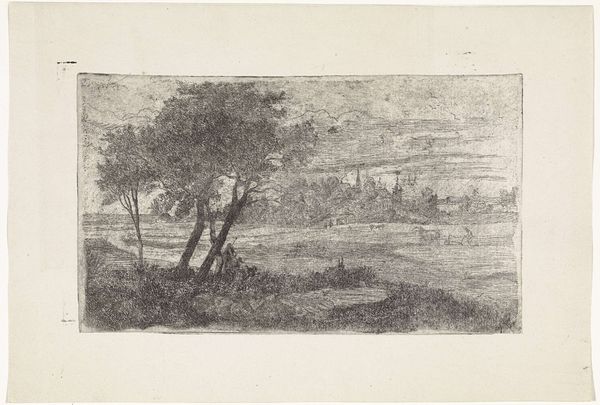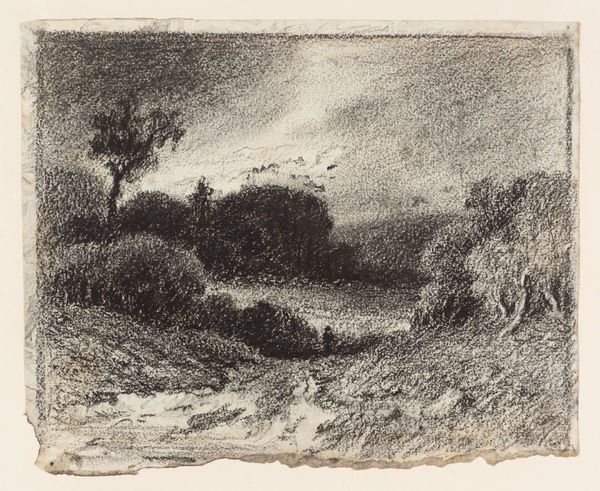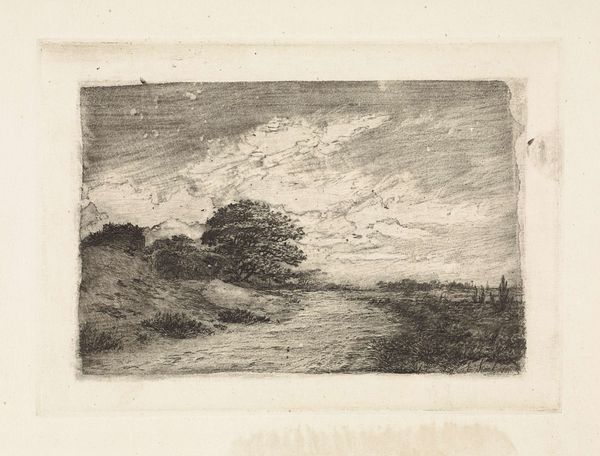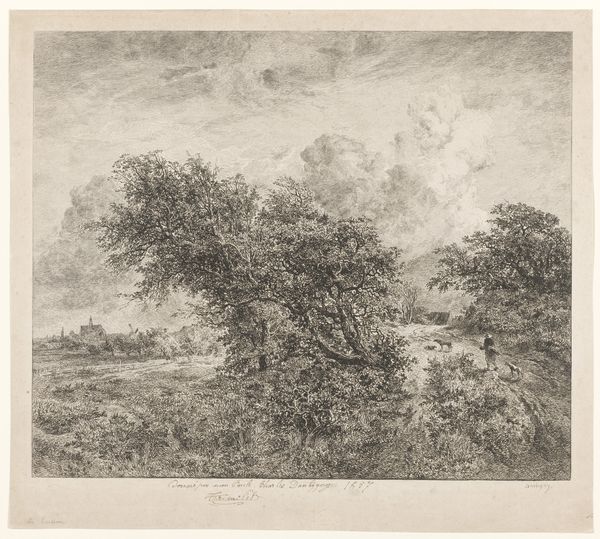
drawing, print, etching
#
drawing
#
baroque
#
dutch-golden-age
# print
#
etching
#
landscape
#
pencil drawing
#
monochrome
Copyright: Public Domain: Artvee
Curator: Here we have "The Three Trees," an etching by Rembrandt van Rijn, dating from 1643. Editor: It’s dramatic, isn’t it? Like the calm before, or maybe during, a storm. That diagonal rain coming down...it almost feels theatrical. Curator: Indeed. Rembrandt was a master of capturing atmosphere. Notice how the landscape stretches out behind those central trees, seemingly bathed in light, despite the brewing tempest. The social history surrounding Dutch landscape art is fascinating. In the 17th century, it was more than just pretty scenery. Editor: More than pretty? Come on, those clouds practically vibrate. It’s like he’s etching feelings, not just forms. For me, there's also this intimate human element with those two tiny figures sitting on the hill in the distance—are they lovers or just taking a pause? That tiny touch of humanity juxtaposed against nature. Curator: Landscape paintings became important reflections of Dutch identity and pride in their reclaimed land. The print medium itself also democratized art, allowing wider access and shaping public perception. And, interesting point about the figures: perhaps they represent everyday folk in contrast with the sublime power of nature. Editor: True. Plus, those stark contrasts - the bright clearing, the brooding sky... It's almost like a stage set, you know? I imagine Rembrandt squinting, trying to make the most compelling and intimate performance of light. Curator: Consider Rembrandt’s historical position: the rise of the Dutch Republic, a powerful mercantile force. Landscape becomes intertwined with national identity and civic pride, something bought into by those able to own and display the images like this. Editor: Maybe...for me, though, the sheer drama eclipses all the national pride stuff. But isn't it amazing how much narrative he can create just with a few lines, shadows, and some really great trees? I want to just dive right into that etching! Curator: Rembrandt certainly prompts layered conversations. His technique opened vistas for an understanding of Dutch art's public life. Editor: I couldn't agree more. Even a small print like this speaks volumes. I keep wanting to interpret what he means by the juxtaposition, like a puzzle you almost have the answer to, but can't complete. What do you think?
Comments
rijksmuseum about 2 years ago
⋮
This is the largest and most painterly landscape that Rembrandt ever etched. The low-lying sun shining from the right enhances the dramatic effect, as does the thunderstorm clearing at the left. The location of this scene is not clear, and Rembrandt may have invented it in part on the spot; the trees, however, most certainly lined a dike along the Zuiderzee.
Join the conversation
Join millions of artists and users on Artera today and experience the ultimate creative platform.
